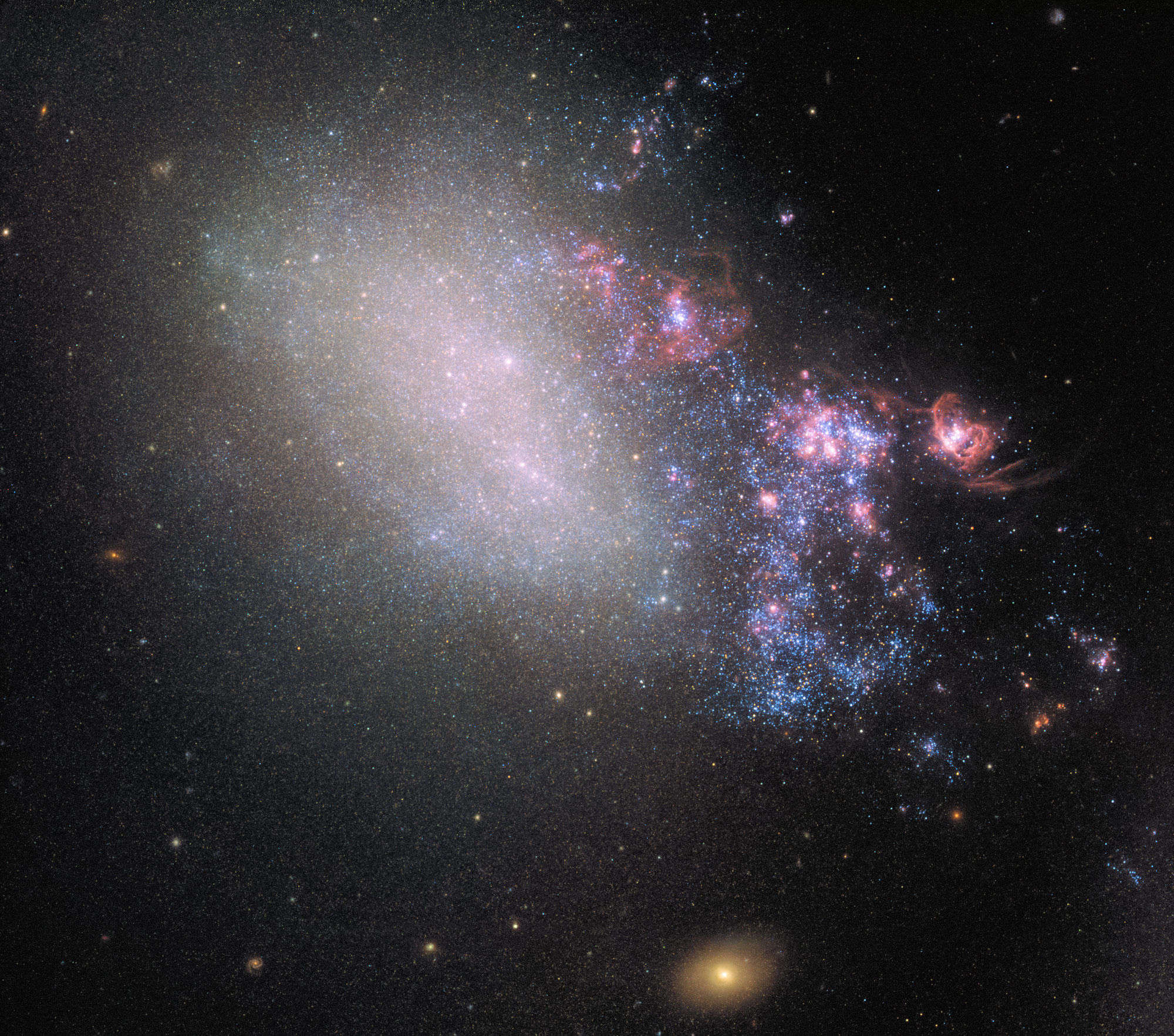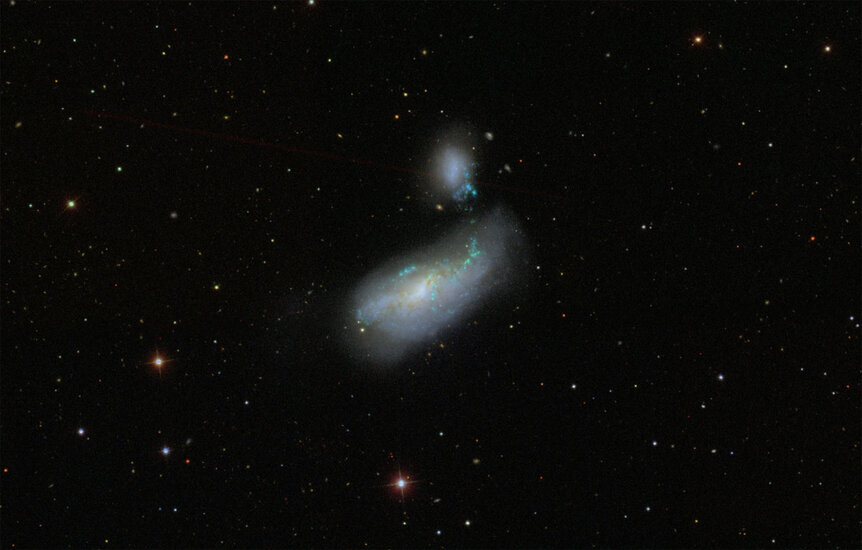Create a free profile to get unlimited access to exclusive videos, sweepstakes, and more!
A lopsided trail of galactic destruction… and construction

Sometimes being a science communicator with an astronomy background means trusting your instincts. In the particular case below it wasn’t like it was a huge revelation or anything, but just a fun confirmation that we do indeed understand a lot of stuff going on in the Universe.
So. I’m not sure where I saw it first, maybe in my email or a link on Twitter, but I happened upon an image of an odd galaxy called NGC 4485. The image was taken using Hubble Space Telescope, and — of course — it’s jaw-droppingly spectacular.
See? Told ya.
NGC 4485 is a dwarf irregular galaxy, meaning it’s small and doesn’t have any sort of overall shape, though to my eye it does look to have a subtle spiral pattern to it. It’s pretty close to us, some 25 million light years (plus or minus a few). If you look at enough Hubble images of galaxies you can tell right away this is a nearby galaxy; you can see lots of details in it, including tons of individual stars (incidentally, the little orange dude near the bottom is a far more distant background galaxy).
But the most obvious bit about it is how lopsided it is. All the big star-forming gas clouds (seen in pinkish red due to their copious amounts of warm hydrogen) are off to the right side, and you can see a whole heap of bright blue stars there too. Those are massive, hot, and luminous stars, so they must be young; they run through their nuclear fuel so rapidly that they can only shine for a few million years tops. Compared to the age of a typical galaxy — ten billion years or more — that’s a blink of the eye.
Clearly, something happened to trigger all that star formation, and just as obviously it only happened on one side of the galaxy.
The moment I saw this image, this all ran through my mind faster than I could track it; that sort of stuff is almost an instinct after being an astronomer for (mumble mumble) years. So even before I read a word about this galaxy, I went to the online astronomical database SIMBAD, entered the name, and then looked over at the snapshot of it from the Sloan Digital Sky Survey that displays automatically. I made it full screen, then zoomed out… and to my not-at-all surprise, saw another galaxy very close by to NGC 4865.
That’s NGC 4490, and not too long ago the two galaxies had a close encounter. I don’t know if they got close enough together to physically collide, but they are certainly proximate enough to have their mutual gravity affect each other. That force from NGC 4490 pulled gas from NGC 4485, and vice-versa, into long, thin streams. These are called tidal tails when they’re outside both galaxies, and tidal bridges when they connect the two galaxies as is the case here. You can see how the curve of gas in NGC 4485 continues on into NGC 4490… and in fact I wonder which galaxy is the true source of that gas. The structure inside NGC 4490 really makes me think it may have been where this gas was stripped from, since that arc forms a natural complement to what’s seen on the other side of NGC 4490’s nucleus. And there’s not much gas in NGC 4485 on the side opposite the encounter, indicating it might not have all that much gas in it. Hmmmm.
Anyway, again, this all flashed through my mind as I looked at the image, and then it finally occurred to me to read the actual press release from Hubble. It basically says what I say here (minus the speculation of the gas source), which is reassuring. I’ve never studied galaxies or galactic collisions professionally, though in grad school and for other work — including writing this blog — I’ve read countless papers on them, so none of my own conclusions are surprising or Earth-shattering. In this case, really, it’s just nice to know that even after all these years my sciencey brain still works. That makes it a lot more fun to relay what’s in it to you.




























